
Contact tracing in its current form is a public health measure dating back to the early 20th century in the United States, though there are anecdotal reports of people practicing contact tracing as far back as the Middle Ages in the days of the Bubonic Plague. Public health officials have used this valuable tactic to handle many different disease outbreaks. Some countries have even adapted digital tools to trace exposure. However, despite its widespread practice, contact tracing is still a major challenge in the U.S. Let’s take a look at what contact tracing entails and what it looks like in different countries, including the U.S.
What Is Contact Tracing?
Public health investigators conduct a series of steps during the process of contact tracing, which is the process of finding and contacting anyone who may have been exposed to an infected person. First, investigators reach out to infected individuals and work with them to identify everyone they’ve been in close contact with during a certain period of time. Next, they warn those contacts of possible exposure, urge them to self-quarantine and provide them with resources, such as information about where to get tested and what to do if their symptoms worsen. Officials don’t share the infected person’s identity.
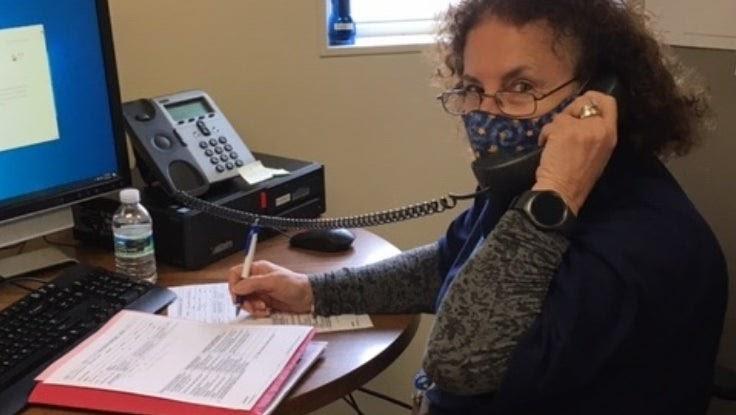
Recent technological innovations mean that contact tracing isn’t always carried out by humans. Proximity tracing and exposure notification tools can automate the process and expand the number of people who can be reached by using phones to track a person’s interactions with others. Digital contact tracing emerged in the midst of the COVID-19 pandemic, and some researchers suggested that, given the transmissibility of the virus, manual contact tracing was infeasible and digital contact tracing was the only way forward.
Why Is Contact Tracing Important?
Contact tracing is often used to manage outbreaks of sexually transmitted infections and tuberculosis. It has also been a valuable tactic for severe outbreaks, including the H1N1 influenza pandemic of 2009 and the SARS outbreak of 2003. During the COVID-19 pandemic, contact tracing has been used to help prevent the spread of the virus, allowing people to get a clear answer about possible exposure so they can take proper precautions sooner and help others avoid infection.
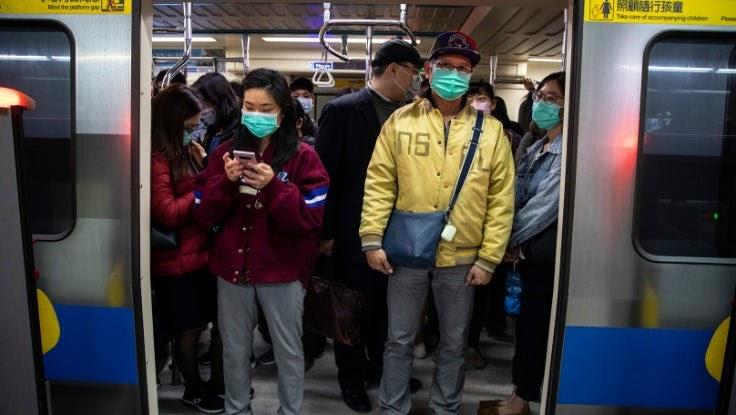
Contact tracing can also offer an alternative to city wide quarantines or lockdowns. With comprehensive contact tracing, everyone doesn’t need to actively quarantine, just sick people and their contacts. This can make it safer for people to return to their normal roles in society while still taking other health precautions, such as practicing social distancing and wearing a face covering. Contact tracing also helps public health workers easily and quickly alert those who may be at risk.
Some countries have embraced digital contact tracing, showing how powerful this step is in fighting COVID-19. Modeling studies show that only about 15% of the population needs to be using these technologies for them to have an impact on reducing spread. But contact tracing is the first step of the solution. Once contacts are alerted of possible exposure, they need easy access to testing and assistance in the following protocols.
Which Countries Have Successfully Used Digital Contact Tracing?
Tech-powered contact tracing has been used in several countries since 2020. Some of these methods are aggressive and mandated by the government, while others simply ask citizens to opt-in to the tracking system. Singapore quickly rolled out TraceTogether, an app that relies on Bluetooth to record people’s movements. It assists public health experts in contact tracing accurately and rapidly. Prime Minister Lee Hsien Loong has publicly encouraged the nation to download and use the app.
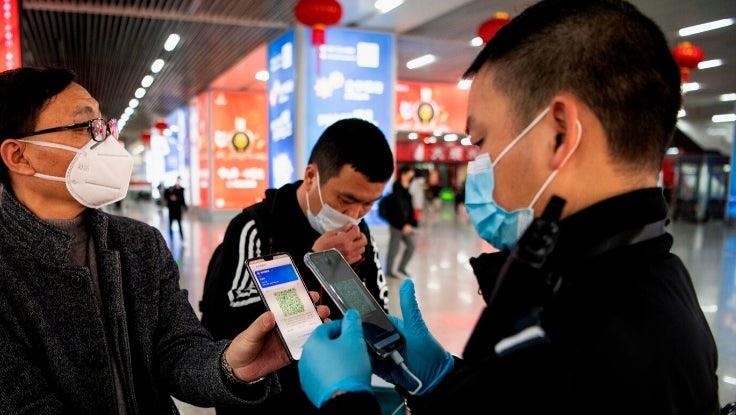
In Taiwan, officials used health data and travel history to alert people to get tested and stay home if they visited a COVID-19 hotspot or had been physically near an infected person. Thanks to its quick response, Taiwan avoided the type of lockdowns that occurred in many parts of Europe and the US. People are free to go to work and school and travel, but those in quarantine are tracked using their cell phones and monitored by the police.
China has a different program: the QR health code. People aren’t allowed to enter restaurants, public transportation and many public spaces without having their codes scanned on their cellphones. A red health code means the person is infected and must stay home. Yellow indicates the person might have been exposed and green signifies they don’t have the virus.
Does the U.S. Have a Contact Tracing App?
App-based contact tracing isn’t implemented in the US. on a national basis, but some states have opted in to an Apple-Google program that turns people’s phones into COVID-19 tracking devices.
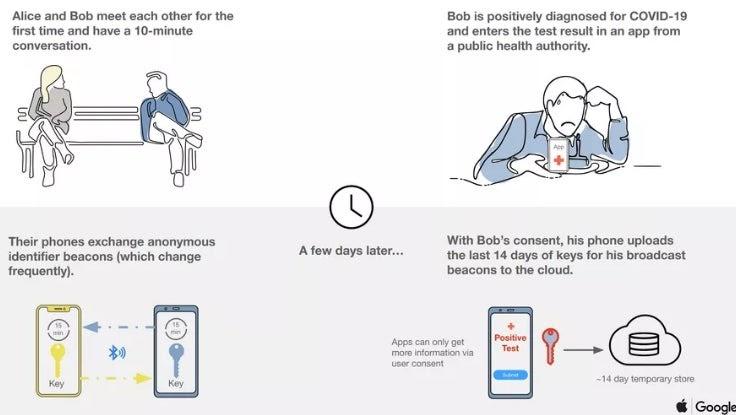
Using Bluetooth technology, the system can track movements and record everyone you come into close contact with each day. If you get infected, the app sends “exposure notifications” to your contacts and advises them to get tested and stay home. The Apple-Google system is designed to work on both iPhone and Android phones and run 24 hours a day.
Google and Apple made the API — a.k.a. the functionality to provide these services via smartphone — not an actual separate app that utilizes the functionality. The API was released to public health agencies on May 20. It has been up to them to release their own apps based on the software.
MIT Technology Review analyzed the efficacy of these apps in 24 states and Washington D.C., all of which had rolled out some version of the app for their specific region. They noted that the lack of federal standards regarding how to use these technologies made comparisons difficult. They also found that lack of trust was an important barrier to people using these apps, and that subsequently, low usage of the apps contributed to lack of trust, creating a cyclical effect. Still, they believe that at least 13 states have had enough buy in to enjoy some level of protection from these efforts.
What are the Problems with Contact Tracing in the U.S.?
Many people are excited about digital contact tracing in the U.S., but a lot are also concerned about risking their privacy. Apple and Google actually addressed that issue for their software by building the system to protect identities by keeping everyone’s data and locations anonymous — even for those who test positive. It’s currently unclear how states with their own apps are handling privacy concerns.
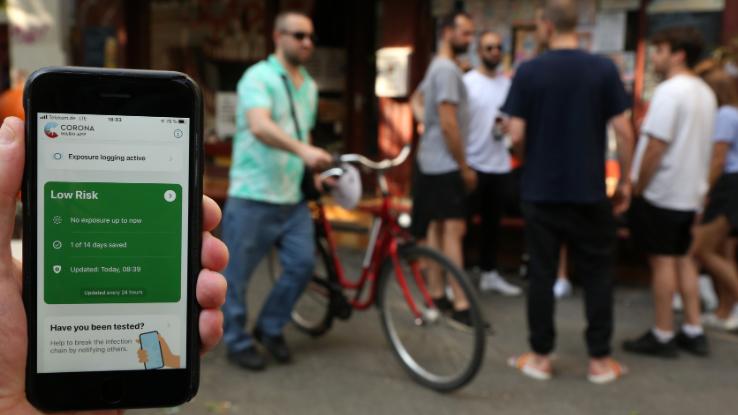
Besides privacy, “inconsistent policies and usage” are also causing issues for contact tracing plans, according to The Wall Street Journal. Unlike other countries, the U.S. doesn’t have a national tracking strategy. Plus, many people aren’t downloading the available apps, so these contact tracing strategies won’t work effectively.
Public health expert Susie Welty explained, “[Contact tracing is] not a silver bullet. It won’t reach everyone; not everybody will comply.” Still, it is one tool in the public health toolkit that can help keep everyone safe.






